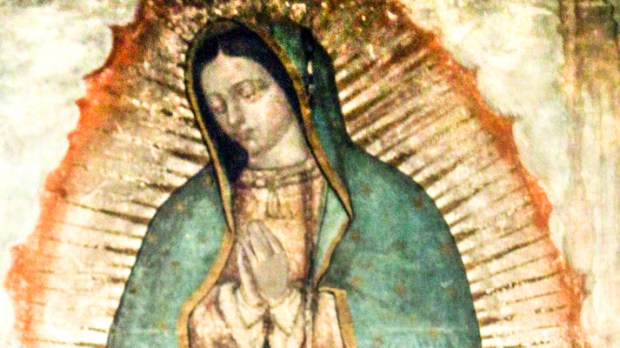Guadalupe, strange as it may seem, and despite its seemingly Nahuatl-sounding phonetics, is most likely not a Mexican aboriginal name. You might say it is not even Spanish. But that depends on what you understand by “Spanish” in the first place. Not only the language, but Spanish Peninsular culture is itself a complex blending of many different influences: Latin, Visigothic, Celtic, Iberian, Jewish, Arabic, even Greek and Phoenician. Hispanic-American culture adds aboriginal American and further African traces to this already multifaceted blend. It is only natural, then, that the name of the Patroness of the Americas somehow reflects this very same
“Guadalupe” is originally the name of a river (also oftentimes referred to as “Guadalupejo”) in the Spanish province of Extremadura, bordering Portugal. It is a relatively small tributary of the bigger Guadiana river. Notice both names, Guadalupe and Guadiana, begin with the very same three letters, gua, a sound that is more or less equivalent to the English Wa. But the sound Wa is also pretty common in Arabic.
According to some etymologists and historians, Guadalupe is a Spanish version of the Arabic Wadi-al-lubben, meaning “the hidden river.” This seemingly minor detail is proof of the fact that there is really no thing as “Spanish,” strictly speaking. The language we commonly refer to as “Spanish” is actually Castilian. In 1230, King Ferdinand III (also known as Saint Ferdinand) unified the Kingdoms of Castile and Leon, occupying most of the peninsula. His son, the famous Alfonso X “The Wise,” eventually made Castilian the official language of the kingdom. But this does not mean that other languages were not freely spoken in the territory, Arabic included. One must keep in mind the Iberian Peninsula was occupied for around eight centuries by the Moors, Arabic-speaking Muslims from Northern Africa. The Wadi-Al-Lubben name makes all the more sense if one considers the river actually narrows (that is, it “hides”) as it approaches its homonymous town.
Now, according to others, the name is a mixture of Latin and Arabic. This is also unsurprising: for centuries, “Latin Arabic” was somewhat loosely spoken around the Peninsula: whereas 70% of Spanish (that is, Castilian) derives from Latin, the remaining 30% is derived from other languages, Arabic included. Wadi-lupe would mean then “the wolves’ river,” wad standing river in Arabic, and “lupe” being an adaptation of the latin “lupus,” for wolf.
In any case, way before the miraculous appearance to Juan Diego Cuauhtlatoatzin, Our Lady of Guadalupe was already a figure of veneration among Spaniards. According to legend, a miraculous statue of Mary with dark skin (that is, a “Virgen Morena,” the word morena meaning “moore-like,” dark skinned) was buried near the Guadalupe River when the Moors conquered the area. Early in the 14th century, a shepherd claimed that Mary appeared to him and told him to dig at the spot where the image was buried. The image was enshrined, and the place soon became a center of pilgrimage (and an inspiration for the Reconquista too). That first image is more commonly known today as Our Lady of Extremadura.
But there is also the possibility that the name Guadalupe originated from Nahuatl, one of the many languages spoken by Mexican-Aztec natives. In fact, Nahuatl was to the Aztecs what Castilian to the Spaniards: an imperial standard language. Juan Diego Cuauhtlatoatzin, a native Nahuatl speaker, also spoke some Spanish. Moreover, the accounts of the apparitions state Mary spoke to him in Nahuatl. Some historians have suggested that Juan Diego called her Coatlaxopeuh, Nahuatl for “she who defeats the serpent,” referring not to the biblical serpent but rather to Quetzalcoatl, the feathered serpent of the Aztec pantheon, as implying the Christianity defeated pre-Hispanic religions in the area. Some others claim he called her Tequatlanopeuh instead, “she who is on the rocky summit” (referring to the hill of Tepeyac, where Mary first appeared to Juan Diego), which makes more sense. In either case, the bishop might have “heard” the phonetic pronunciation of these names as the already-familiar Guadalupe.
As interesting as these theories might be, there is no contemporaneous evidence that these Nahuatl names were ever used to refer to Mary. Instead, manuscripts and chronicles of the early colonial period relate the Virgin was referred to as Guadalupe from the very first day.

